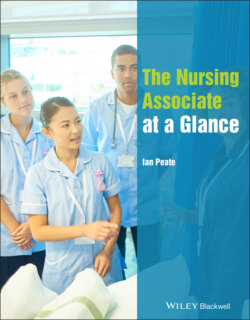Читать книгу The Nursing Associate at a Glance - Ian Peate - Страница 22
Оглавление10 Maintaining appropriate relationships
At the point of registration, the Nursing Associate will be able to: demonstrate the skills and abilities required to develop, manage and maintain appropriate relationships with people, their families, carers and colleagues
Figure 10.1 Getting the balance right.
Box 10.1 Being helpful and avoiding boundary violation.
Being helpful when implementing care:
You must treat all patients, at all times with dignity and respect.
Inspire confidence in patients by speaking, acting and dressing professionally.
Talk about and treat patients and their families respectfully.
Be fair and consistent with each patient to inspire trust, amplify your professionalism and enhance your credibility.
Behaviours that should be avoided when planning and implementing patient can include:
Discussing your intimate or personal issues with a patient
Keeping secrets with a patient or for a patient
Spending more time with a patient or re‐visiting the patient when you are off‐duty or out of uniform
Engaging in any behaviour that could be misinterpreted as flirting (the Nursing Associate needs to understand the difference between a sincere compliment that has the potential to develop the patient’s self‐esteem and one that could be understood as flirtatious)
Taking a patient’s side when there is a disagreement between the patient and their spouse or the patient and members of their family.
Box 10.2 The Six Ps and social media.
Professional – Act professionally at all times.
Positive – Keep posts positive.
Person free, patient free – Keep posts person or patient free.
Protect yourself – Protect your professionalism, your reputation and yourself.
Privacy – Keep personal and professional lives separate. Check privacy settings and respect privacy of others.
Pause before you post – Consider the implications of what you are posting. Avoid posting in haste or in anger. Do not respond to other posts in haste.
Top Tip
By virtue of our profession, there are situations in which our designated boundaries permit for intimate entry into another person's/people’s life experiences.
The Nursing Associate–patient relationship
A therapeutic Nursing Associate–patient relationship is seen as a helping relationship that is based on shared trust and respect. This special caring relationship can develop when the Nursing Associate and the patient come together, and that coming together results in harmony and healing.
Professional boundaries
Professional boundaries define the relationship that supports a therapeutic connection between the Nursing Associate and the patient. Professional boundaries that are encountered in nursing describe a different and more complex kind of relationship than those professional relationships experienced by people in other careers. The professional relationships Nursing Associates share with patients are privileged relationships, and there is a balance that has to be reached between being helpful, under‐involved and over‐involved (see Figure 10.1).
Because of the profession in which we work, there are a number of situations, encountered day in and day out, in which our designated boundaries allow for intimate entry into another person’s life experiences. These professional boundaries are important as they provide guidelines that are essential to us as we practise in a professional manner.
As a result of the knowledge and skills that you possess as a Nursing Associate as well as the privilege you have been afforded in being able to, for example, access confidential information, this makes the patient vulnerable, it gives you power as it is you who controls the care that is provided, you have access to an amazing amount of private and personal information; as well as this, you have specialised nursing knowledge.
Boundary violations
Boundary violations occur when potentially harmful actions breach the Nursing Associate’s professional relationship with patients (see Box 10.1). The crossing of boundaries can be blurry, they may not be white or black, they are often grey areas and they may require you to make a professional judgement and indeed to seek the professional advice of others. There are a number of potential violations, including any sexual involvement with a patient.
The crossing of a boundary can have ramifications. A boundary crossing has the potential to damage your relationship with your patient, it can cause harm to other patients, it can put colleagues in difficult and unacceptable situations and also cause risk to your employer and the profession. When boundaries are violated, there is a real risk of legal consequences, and the Nursing and Midwifery Council (NMC) may call you to account for your actions. You may also experience harm as the consequence of your actions could lead to distress, and you might experience negative mental health issues.
When the Nursing Associate carries out their role in a professional manner, they recognise and maintain boundaries so as to establish appropriate limits to relationships. Each Nursing Associate has a responsibility to understand professional boundary guidelines and be aware of the possibility and consequences of violating these boundaries.
Use of social media
The NMC (2019) has produced guidance that sets out broad principles to enable registrants to think through issues and act professionally and ensure public protection at all times. Guidance should be read in conjunction with The Code: Professional Standards of Practice and Behaviour for Nurses, Midwives and Nursing Associates.
When social media is used responsibly and in an appropriate manner, social networking sites can offer several benefits to Nursing Associates. They can use social media to connect with an enormous range of professional development resources as well as locating up‐to‐date information regarding nursing issues.
The Nursing and Midwifery Board of Ireland discuss six Ps and social media (see Box 10.2).
